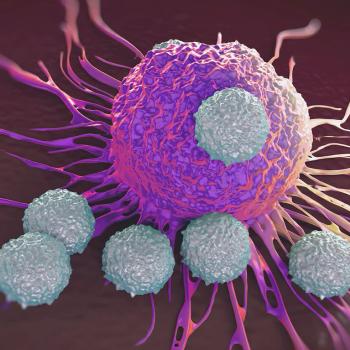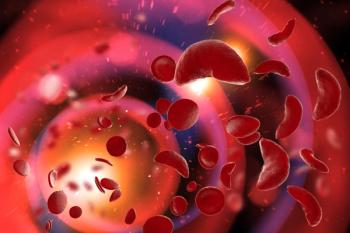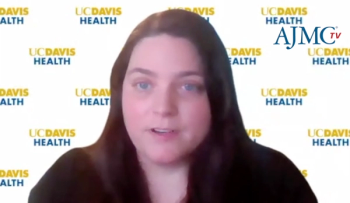
The State and Future of Viral, Nonviral Vectors for Gene Therapy
Key Takeaways
- Viral vectors dominate gene therapy, with lentivirus, adenovirus, and AAV being key players, each with unique advantages and limitations.
- Non-viral vectors, such as lipid nanoparticles and GalNAc, offer safer alternatives but face challenges like lower transfection efficiency and off-target biodistribution.
Vectors, both viral and non-viral, continue to further progress gene therapy for a variety of disease states. With further innovation, the approaches can expand their reach even further.
The review highlights that no single vector is universally optimal, each having unique strengths and trade-offs depending on the therapeutic context. But with continuous innovation in both viral and non-viral platforms, gene therapy is poised to move beyond rare diseases and toward broader applications in cancer, cardiovascular, and neurological conditions, the researchers write.
To date, there have been 45
Viral vectors remain the workhorse of gene therapy, representing 29 of the 35 vector-based therapies approved globally to date. These include lentivirus (LV), adenovirus (Ad), and adeno-associated virus (AAV), all of which harness viruses’ natural ability to infect cells and deliver genetic payloads.1
LVs, for example, are widely used in ex vivo applications such as chimeric antigen receptor (CAR) T-cell therapies and hematopoietic stem cell gene therapies. Products like tisagenlecleucel (Kymriah; Novartis), betibeglogene autotemcel (Zynteglo; Bluebird Bio), and atidarsagene autotemcel (Libmeldy; Orchard Therapeutics) represent major milestones in treating leukemia, β-thalassemia, and leukodystrophies, respectively. However, integration into the host genome poses risks like insertional mutagenesis, as seen in a small subset of patients treated with elivaldogeneautotemcel (Skysona; Bluebird Bio) who later developed blood cancers.
Adenovirus vectors offer high transgene expression and a large cargo capacity, but with high immunogenicity limits, their use remains confined to cancer and vaccine applications. Early successes like GENDICINE and ONCORINE for head and neck cancers demonstrate their potential, though newer iterations are addressing safety limitations.
AAV vectors have emerged as the safest and most versatile platform for in vivo therapies. With lower immunogenicity and efficient delivery to non-dividing cells, AAV has enabled landmark approvals such as voretigeneneparvovec-rzyl (Luxturna; Spark Therapeutics) for inherited retinal dystrophy and onasemnogene abeparvovec-xioi (Zolgensma; Novartis) for spinal muscular atrophy. However, limited cargo size (~4.7 kb) restricts AAV’s use for larger genes. New dual-vector approaches, such as those used in OTOF gene therapy for hereditary hearing loss, show promise in overcoming this limitation.
Non-viral vectors are gaining momentum as safer, more scalable alternatives. Unlike viruses, they do not integrate into the host genome or trigger strong immune responses. Their broader cargo capacity and lower production cost make them attractive for a wide range of applications.
Lipid nanoparticles (LNPs) have gained widespread recognition, especially following their successful use in mRNA COVID-19 vaccines. In gene therapy, LNPs are used to deliver siRNA and CRISPR components. Patisiran (Onpattro; Alnylam), approved in 2018 for hereditary transthyretin amyloidosis, was the first LNP-based siRNA therapy, and more recently, NTLA-2002 has demonstrated the feasibility of CRISPR delivery for hereditary angioedema.
Another key platform is N-acetylgalactosamine (GalNAc), used for liver-targeted delivery of RNA therapies. GalNAc conjugation has enabled multiple FDA-approved drugs, including givosiran (Givlaari; Alnylam), lumasiran (Oxlumo; Alnylam), and inclisiran (Leqvio; Novartis), to effectively treat rare genetic and cardiovascular diseases with subcutaneous administration.
Despite their advantages, non-viral vectors face challenges such as lower transfection efficiency, off-target biodistribution (mostly to the liver), and challenges in delivering large or complex genetic material like CRISPR systems. New designs, including proteolipid vehicles and inorganic nanoparticles, aim to address these limitations and expand delivery to extrahepatic tissues.
Both viral and non-viral vectors face common barriers, including off-target effects and difficulties achieving tissue-specific expression.
“Overcoming these challenges is essential for advancing the understanding of viral–host interaction and improvements of vectors,” detailed the researchers. Otherwise, to achieve specific expression of target genes, specific regulatory elements such as promoters, enhancers, repressors, and miRNA binding sites are used. The combination of novel vectors with tissue- and cell-specific regulatory elements to construct a toolbox for targeted delivery is a promising strategy.
Immune-related toxicities also remain a concern, explained the researchers, especially with high-dose AAV therapies. Strategies such as using tissue-specific promoters, capsid engineering, and transient immunosuppression are being explored to improve safety.
References
- Geng G, Xu Y, Hu Z, et al. viral and non-viral vectors in gene therapy: current state and clinical perspectives. eBioMedicine. Published online July 1, 2025. doi:10.1016/j.ebiom.2025.105834
- Approved cellular and gene therapy products. FDA. Updated May 15, 2025. Accessed July 18. 2025.
https://www.fda.gov/vaccines-blood-biologics/cellular-gene-therapy-products/approved-cellular-and-gene-therapy-produ
Newsletter
Stay ahead of policy, cost, and value—subscribe to AJMC for expert insights at the intersection of clinical care and health economics.





























































